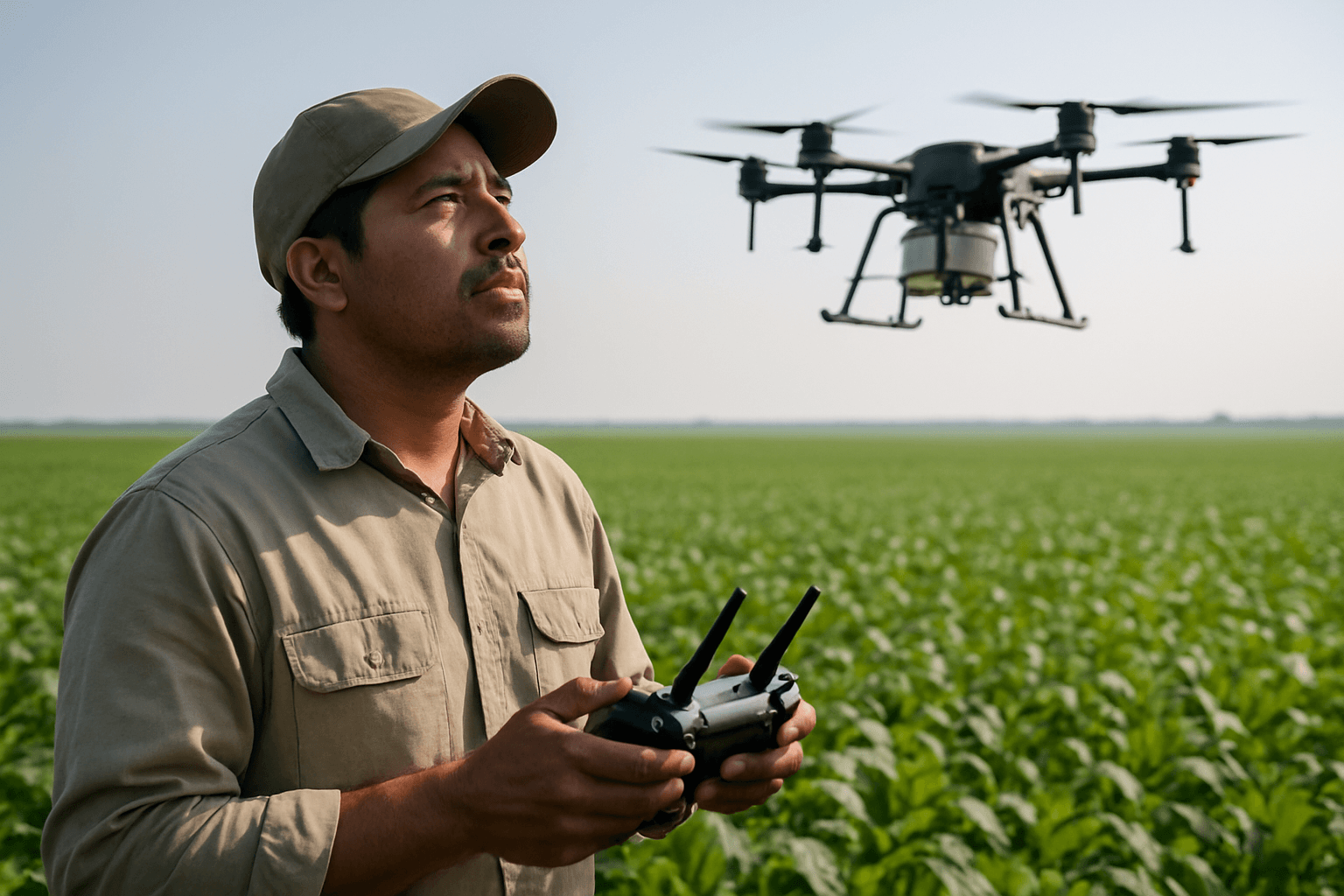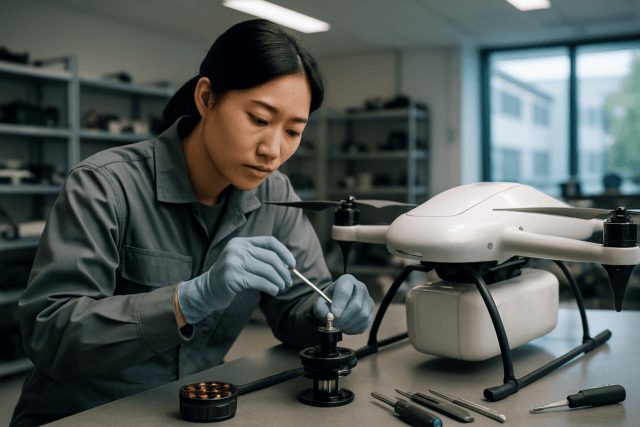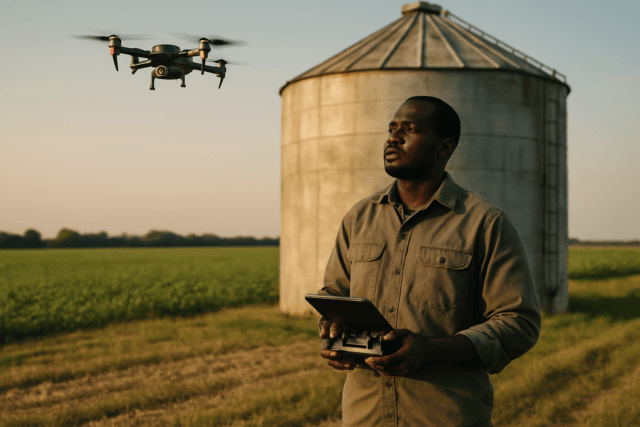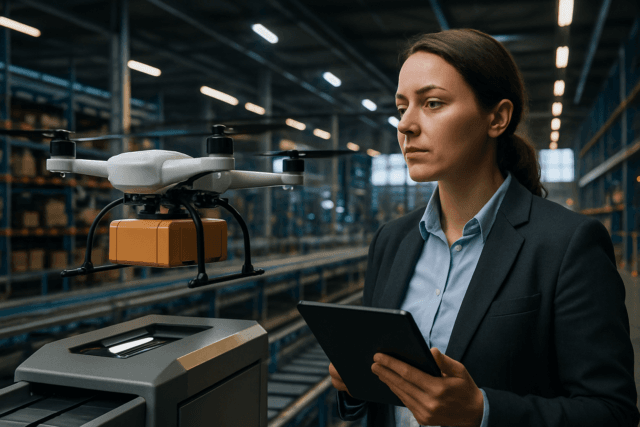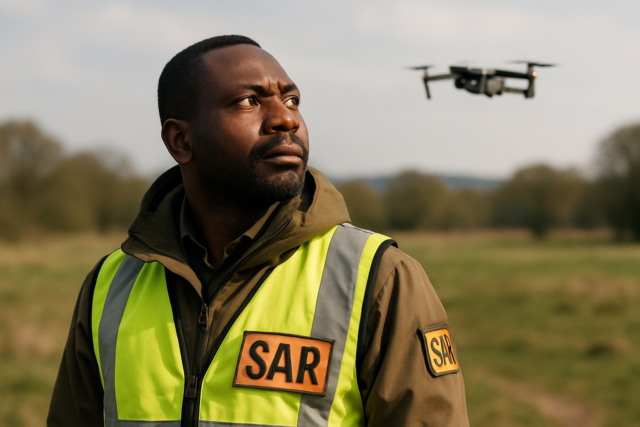Pest infestations have long been a farmer’s bane, silently (or not so silently) eroding crop yields and threatening global food security. Traditional pest management often relies on labor-intensive scouting and broad-spectrum pesticide applications, which can be inefficient, costly, and environmentally detrimental. However, a new era of agricultural innovation is taking flight, with drone-based pest detection emerging as a transformative solution. By leveraging advanced aerial technology and intelligent data analysis, farmers can now identify and address pest threats with unprecedented precision, efficiency, and sustainability.
The Growing Threat of Agricultural Pests
Agricultural pests, including insects, weeds, and diseases, are responsible for estimated losses of 20-40% of crop yields each year globally. These threats not only impact farmers’ livelihoods but also strain the capacity to feed a growing global population. Traditional methods of identifying and managing pests are often reactive, slow, and resource-intensive. Manual scouting is time-consuming and prone to human error, often missing early signs of infestation until significant damage has occurred. This can lead to widespread crop damage and necessitates the extensive use of chemicals.
How Drones Revolutionize Pest Detection
Unmanned Aerial Vehicles (UAVs), commonly known as drones, are reshaping how farmers approach crop protection by offering a proactive and highly accurate method for pest detection. Equipped with sophisticated sensors and imaging systems, these aerial platforms can rapidly survey vast agricultural areas, collecting critical data that reveals the health status of crops and pinpoints problem areas.
Advanced Imaging Technologies
The ability of drones to detect pests stems from their integration of specialized cameras and sensors that can “see” beyond what is visible to the human eye. These include:
- Multispectral Cameras: These sensors capture light across several specific wavelength bands, including visible light, near-infrared (NIR), and red-edge. Healthy plants reflect light differently than stressed or pest-infested plants. Multispectral imagery can detect subtle changes in plant physiology, such as shifts in light absorption or reflection, which are early indicators of stress long before visible symptoms appear.
- Hyperspectral Cameras: Offering even greater spectral detail than multispectral cameras, hyperspectral sensors collect data across hundreds of narrow, contiguous wavelength bands. This rich data allows for a more precise analysis of plant health and can help differentiate between various types of stress or even specific pest species.
- Thermal Cameras: Thermal imaging detects temperature differences in crop fields. Plants under stress from pests or diseases often exhibit altered transpiration rates, leading to temperature variations that thermal cameras can identify. For example, a fungal infection might appear as a cooler spot on a field map.
- RGB Cameras: Standard high-resolution RGB (Red, Green, Blue) cameras are also used, often in conjunction with other sensors, to provide visual context and detailed imagery for identifying larger pests, specific damage patterns, or anomalies in crop growth.
AI and Machine Learning for Data Analysis
The sheer volume of data collected by drones would be overwhelming without advanced processing capabilities. This is where Artificial Intelligence (AI) and machine learning (ML) play a pivotal role.
- Automated Pest Identification: AI algorithms, particularly convolutional neural networks (CNNs), are trained on vast datasets of healthy crops, pest-infested plants, and images of specific pests. This enables them to analyze drone imagery and accurately identify specific pest species, disease patterns, and signs of stress in real-time.
- Real-Time Data Processing and Decision Making: AI allows drones to instantly analyze collected data during flight, providing real-time monitoring and enabling quick decisions on where intervention is needed. Some systems can even predict pest outbreaks by analyzing weather, crop type, and historical data.
- Mapping and Hotspot Identification: Once processed, the data is transformed into detailed maps and trend reports that highlight “hotspots” of infestation or stress. These maps guide farmers to specific areas requiring attention, rather than entire fields.
Precision and Early Detection
The combination of advanced sensors and AI allows for unprecedented precision and early detection. Drones can spot issues days or even weeks before they become visible to the human eye, enabling preventive measures to be implemented in a timely manner. This early warning is crucial because pests can multiply and spread rapidly, causing irreversible damage if not addressed quickly.
Key Benefits of Drone-Based Pest Detection
The adoption of drone technology in pest detection offers numerous advantages that contribute to more efficient, sustainable, and profitable farming practices.
Enhanced Efficiency and Cost Savings
Drones can cover large areas of farmland significantly faster than manual scouting or ground-based vehicles. This rapid surveillance saves considerable time and labor costs. By identifying specific problem areas, farmers can apply treatments only where needed, reducing the overall volume of pesticides, fertilizers, and water used, leading to substantial cost savings on inputs.
Reduced Chemical Usage and Environmental Impact
Precision spraying, guided by drone-identified hotspots, minimizes the broadcast application of pesticides across entire fields. This targeted approach significantly reduces the amount of chemicals released into the environment, lessening chemical runoff into water sources and protecting biodiversity. It also reduces exposure for farm workers, promoting a safer working environment.
Improved Crop Yields and Food Security
Early and accurate detection of pests allows for timely and precise interventions, preventing widespread damage and maximizing crop health. By mitigating pest-related losses, drone technology contributes to higher crop yields and better-quality produce, thereby enhancing food security.
Data-Driven Decision Making
Drone-collected data, analyzed by AI, provides farmers with actionable insights and detailed historical records of crop health and pest activity. This data-driven approach allows for more informed decision-making, better resource management, and the ability to track the effectiveness of interventions over time, optimizing future pest management strategies.
Challenges and Considerations
Despite the promising benefits, the widespread adoption of drone-based pest detection faces certain challenges:
Regulatory Hurdles and Pilot Training
Regulations regarding drone operation, especially for commercial agricultural applications and pesticide spraying, vary significantly by region and country. Farmers may require special licenses, permits, and training to operate these advanced UAVs, adding to the initial complexities.
Data Management and Connectivity
Processing and storing the vast amounts of data generated by multispectral and hyperspectral sensors require robust data management systems and reliable connectivity, particularly in remote agricultural areas. The accuracy and reliability of AI models also depend on well-validated datasets that can generalize across different fields and growing conditions.
Initial Investment and Accessibility
The initial cost of advanced agricultural drones equipped with high-resolution sensors and AI software can be a significant barrier for small and medium-scale farmers. However, the emergence of “Drone-as-a-Service” (DaaS) business models is making this technology more accessible, allowing farmers to leverage drone capabilities without large upfront investments.
The Future of Drone-Enabled Pest Management
The future of drone-based pest detection and management is bright, with continuous advancements in technology pushing the boundaries of what’s possible.
- More Advanced Sensors and AI: We can anticipate drones with even more sophisticated sensors capable of detecting pests at earlier stages and AI systems offering real-time analysis and instant treatment recommendations. Research is ongoing into integrating a wider array of sensors, including those for volatile organic compounds (VOCs) and acoustics, to infer pest activity.
- Swarm Technology and Automation: Autonomous drone systems are becoming more prevalent, with AI enabling drones to navigate complex terrains and even coordinate as swarms to cover large areas efficiently. This will lead to increased operational speed and coverage.
- Integration with Precision Agriculture Ecosystems: Drones are increasingly being integrated with other smart farming technologies, such as GPS-guided tractors, soil sensors, IoT devices, and cloud-based farm management platforms. This holistic approach will enable more comprehensive crop monitoring, predictive modeling, and automated interventions, making farming more intelligent and responsive.
- Sustainable Practices: The continuous refinement of drone technology will further support sustainable agricultural practices by optimizing resource use, minimizing chemical inputs, and promoting environmental stewardship.
Drone-based pest detection represents a significant leap forward in precision agriculture, offering farmers powerful tools to protect their crops, reduce costs, and operate more sustainably. As the technology continues to evolve, these aerial innovators will play an increasingly vital role in ensuring global food security and shaping the future of farming.

